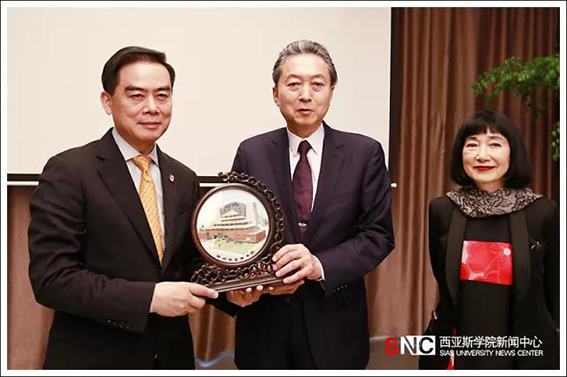
|
Context
In terms of the strategic relation between China and the U.S., Henry Kissinger proposed the concept of a “US–China Pacific Community.” Meanwhile, in 2012, the Chairman of Chinese National Innovation and Development Strategy Research Association, Zheng Bijian, also put forward the strategic concept of “China’s peaceful rise.” China should build “common interests” and a “community of interest” with all relevant countries and regions so that Chinese society will be full of vitality, harmony, and stability. Singapore’s Lee Kuan Yew said that China will avoid any conduct that damages Sino–U.S. relations. Challenging the US, a more powerful, technologically advanced country, will destroy China’s “peaceful rise.”
The strategic concept of a “peaceful rise” is a contradiction, as is “civilized rejuvenation,” but reflects great wisdom and innovation, which is referred to as “innovation of management concepts and philosophy.” This is easy to understand for China and the Chinese people. There is also an effort being made to keep both partners and competitors at ease. However, the key words here are “rising” and “revival,” which are still difficult concepts for partners to accept. With the evaluation of a “peaceful rise,” Lee Kuan Yew pointed out that the concept of a “peaceful rise” is contradictory. Any ‘risings’ are frightening things. Historically, the rise of great powers meant that the rising power got the world’s resources through war and the integration of the world’s resources, causing conflicts between old and new powers. How can partners stop being afraid? How can “common interests” and “communities of interests” be built? These are all difficulties and challenges faced by both China and the USA. Therefore, strategic and innovative dialogues in the building of trust between these two sides is of great significance.
Observers have commented that mutual strategic suspicion between the USA and China is significant, and desperately needs to be addressed. The question of whether the two countries will step out of the box—the “adversary vicious circle” of No.1 and No. 2—and create a new era of peaceful competition instead of a tragic confrontation has become a major test for both countries, and even the rest of the world. Still, rather than seeking to build trust—a worthy but difficult and, at best, long-term goal—a more realistic objective would be to enhance the level of mutual confidence, predictability, and transparency. If successfully achieved, this will help both leaders and countries to interpret future developments more accurately, minimizing the risks of misunderstanding and facilitating their ability to communicate effectively.
China and the USA are of similar size with regard to land area, and share the same degree of confidence in their economic success and international influence. However, the two states are quite different in terms of history, culture, value, social, and political systems. American history shows an overall harmonious coexistence with other countries, while in Chinese history it is difficult to find a precedent of dealing with such a large country. The USA has respected the universal concept, which is different from China’s ideas. China has the world’s largest population (1.3 billion people) and 9.60 million km2 of land. Chinese history has shaped its unique cultural superiority and self-confidence. The USA, with a population of 300 million and 9.62 million km2 of land is rich in natural resources and has a favorable geographical environment. A special immigrant community has created an openness and diversity in American culture. Sino–US cultural differences exist in their basic natures. The former belongs to Oriental civilization, while the latter belongs to Western civilization. Arnold Toynbee (1889–1975) pointed out that the independence of these two civilizations is most significant and in history they have almost nothing in common. It is believed that greater mutual confidence, despite the two different systems in both countries, will deliver policy deliberations. |
What's New
Thursday, May 31 – Former Japanese Prime Minister, Yukio Hatoyama, visited Sias International University on the... Tuesday, May 29 – On the 27th of May, Sias International University held the Graduation Ceremony for the...
Monday, May 28 – Sias International University held its 16th Homecoming across the campus on the 26th of May. A... |






 豫公网安备 41018402000137 号
豫公网安备 41018402000137 号